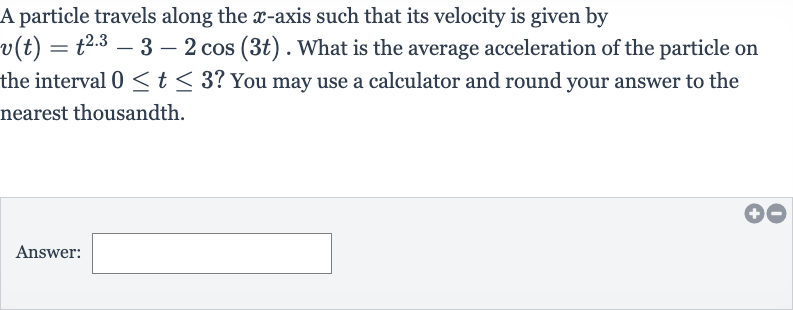Full solution
Q. A particle travels along the -axis such that its velocity is given by . What is the average acceleration of the particle on the interval ? You may use a calculator and round your answer to the nearest thousandth.Answer:
- Calculate Initial Velocity: To find the average acceleration over the interval from to , we need to calculate the change in velocity over the change in time. The formula for average acceleration () is:First, we need to find the initial and final velocities using the given velocity function .
- Calculate Final Velocity: Let's calculate the initial velocity :
cm/s - Recalculate Cosine Function: Now, let's calculate the final velocity :
Use a calculator to find the value of and . - Recalculate Cosine Function: Now, let's calculate the final velocity :
Use a calculator to find the value of and .Using a calculator, we find:
is not a standard value, and it seems we have made a mistake. The argument of the cosine function should be in radians, not degrees. Since the problem does not specify, we assume the standard mathematical practice of using radians. We need to recalculate correctly.
More problems from Relate position, velocity, speed, and acceleration using derivatives
QuestionGet tutor help
QuestionGet tutor help
QuestionGet tutor help
QuestionGet tutor help
QuestionGet tutor help
QuestionGet tutor help
QuestionGet tutor help
QuestionGet tutor help
QuestionGet tutor help

